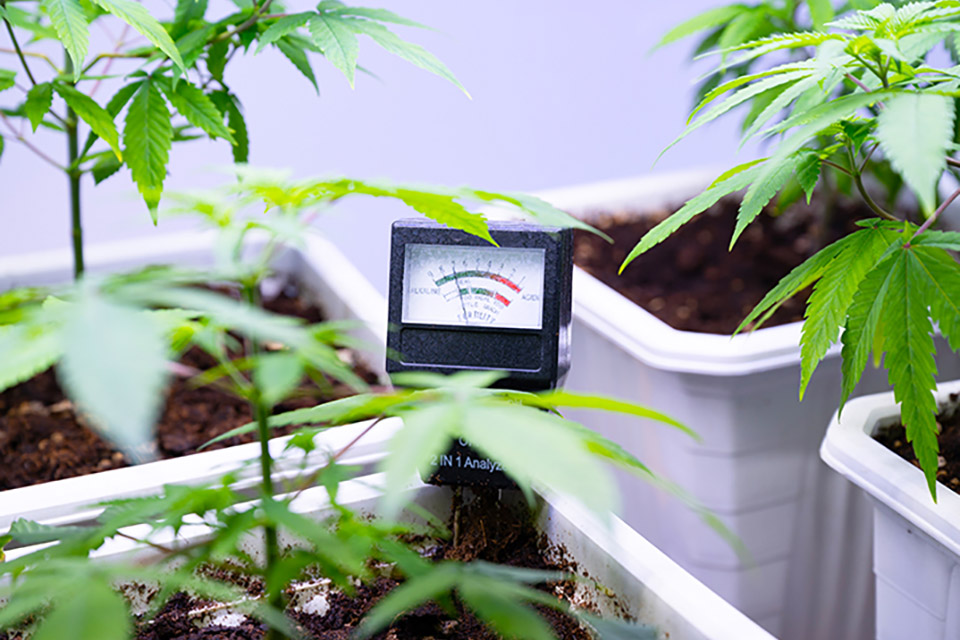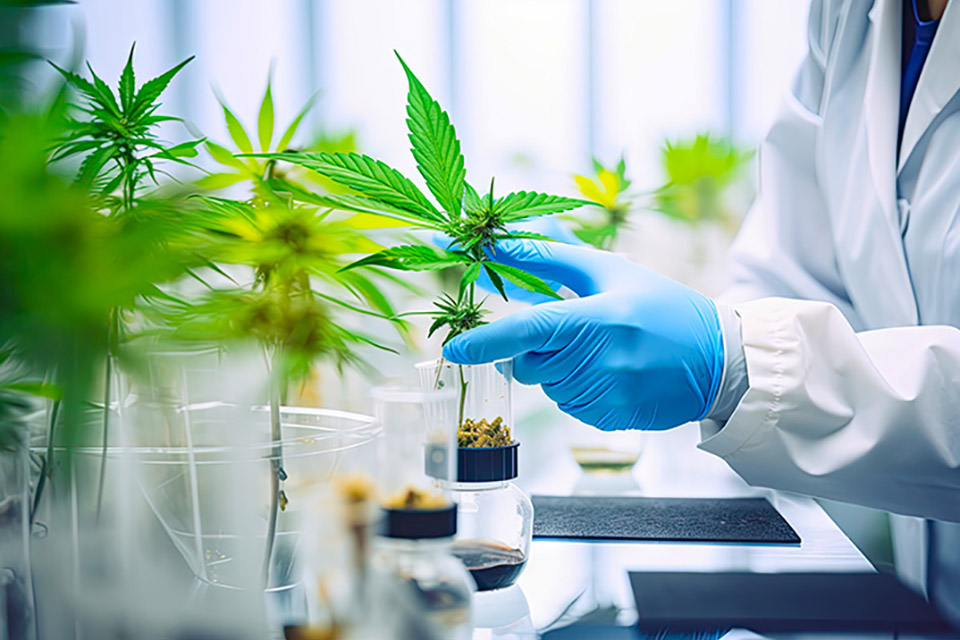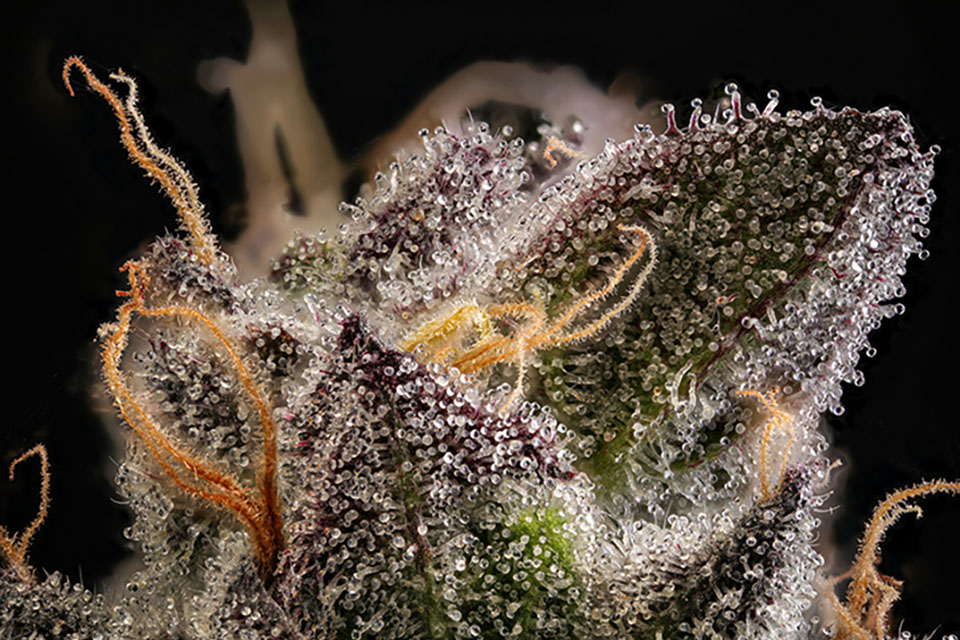
Nitrogen toxicity in weed plants can have a significant impact on the health and growth of your cannabis crops. Understanding the signs and causes of nitrogen toxicity is essential for home growers looking to maximize their harvest.
Identifying Nitrogen Toxicity
Nitrogen toxicity in weed plants is a common issue faced by home growers. Recognizing the signs of nitrogen toxicity is the first step towards addressing the problem and ensuring your cannabis plants continue to thrive.
Visual Symptoms of Nitrogen Toxicity in Cannabis Plants
Cannabis plants may show symptoms of nitrogen toxicity in the following ways:
- Dark green leaves: One of the earliest indications of nitrogen toxicity in weed plants is the appearance of unusually dark green leaves. This is due to the excess amount of nitrogen, making the chlorophyll in the leaves more concentrated. While a healthy green hue indicates a nutrient-rich plant, an overly dark green can signal that your plants are receiving too much nitrogen.
- Leaf curling and stunted growth: Beyond the abnormally dark green color, you might notice the leaves of your weed plants curling downwards, a phenomenon often described as “the claw.” Plants absorbing too much nitrogen can cause the leaves to become heavy and droop, creating this claw-like appearance. Moreover, nitrogen toxicity may stunt the overall growth of your plants, resulting in smaller yields.
Testing Soil and Water for Nitrogen Levels
Apart from observing the physical symptoms in your plants, it is advisable to test your soil and water regularly for nitrogen levels. Several testing kits available on the market can provide a quick and accurate analysis of your gardening environment. A high nitrogen level in your soil or water supply can put your plants at risk of nitrogen toxicity. By regularly testing, you can adjust your feeding schedule and prevent potential toxicity, ensuring your cannabis crops grow to their full potential.
Causes of Nitrogen Toxicity
Understanding the causes of nitrogen toxicity in weed plants is crucial for developing effective prevention and treatment strategies. A range of factors can contribute to this issue, but the two most common causes are over-fertilization and poor soil drainage.
Over-Fertilization and Excessive Use of Nitrogen-Rich Nutrients
A key cause of nitrogen toxicity lies in the excessive use of nitrogen-rich nutrients in pursuing larger and healthier plants. While it’s true that nitrogen plays an essential role in the growth of cannabis plants, an overabundance can lead to toxicity. If you regularly add more nutrient-rich fertilizers to boost your harvest, you could be doing more harm than good. The secret lies in finding the right balance for nutrient feeding.
Poor Soil Drainage Leading to Nitrogen Buildup
Another common cause of nitrogen toxicity in weed plants is poor soil drainage. Nitrogen, being a water-soluble nutrient, can easily build up in the soil if the drainage is inadequate. Over time, this can lead to an overload of nitrogen, resulting in toxicity. Therefore, ensuring that your gardening environment has proper soil drainage is critical in preventing nitrogen toxicity.
Preventing and Treating Nitrogen Toxicity
Managing nitrogen toxicity in weed plants involves taking preventive measures and implementing appropriate treatment strategies. This approach comprises proper nutrient management and maintaining balanced feeding schedules.
Proper Nutrient Management and Balanced Feeding Schedules
Maintaining the right level of nutrients is crucial for the health of your weed plants. Avoid overusing nitrogen-rich fertilizers to prevent toxicity and aim for balanced nutrient feeding. It is essential to understand that a high amount of any nutrient, including nitrogen, can harm your plants. An optimal feeding schedule should provide your plants with the adequate nitrogen they need without leading to an overabundance.
Adjusting Nutrient Feeding to Restore Balance and Flushing with Clean Water
If your plants are already displaying symptoms of nitrogen toxicity, restoring nutrient balance should be prioritized. This process can involve adjusting your nutrient feeding to reduce the nitrogen content and ‘flushing’ the plants with clean water. Flushing is a technique used to drain away excess nitrogen and other nutrients from your plants and the surrounding soil. It can be a highly effective way to swiftly treat nitrogen toxicity and prevent further damage.
Recommended Nutrient Solutions
Choosing the proper nutrient solutions is key to balancing nitrogen levels in your weed plants.
Nitrogen-Balanced Fertilizers for Cannabis Plants
Fertilizers designed specifically for cannabis plants often feature a balanced nitrogen content. These fertilizers can help provide your plants with the necessary nutrients while preventing toxicity.
Organic Remedies for Correcting Nitrogen Toxicity
In addition, organic remedies can help correct nitrogen toxicity. These solutions might include using composted materials or nitrogen-fixing bacteria that can naturally control the nitrogen levels in your soil.
Importance of Understanding Nitrogen Toxicity
Successfully managing nitrogen toxicity in weed plants involves understanding its causes, identifying symptoms early, and implementing proper prevention and treatment methods. Regular testing of soil and water, appropriate feeding schedules, efficient drainage, and suitable nutrient solutions are key components to ensuring the health of your cannabis crops.
While the information provided here gives you a significant head start, it is vital to continue learning and staying updated on the best cultivation practices. Consulting with other home growers and professionals in the field, reading up on the subject, and trying out various products can provide additional insights. By understanding and managing nitrogen toxicity, you can enjoy a thriving, healthy, and bountiful weed harvest.



